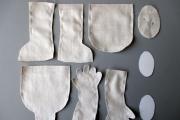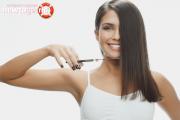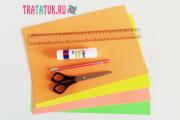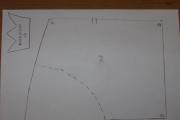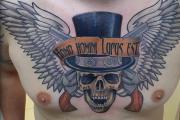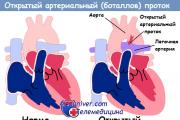For running, size up. Which sneakers are best for running on asphalt?
When you decide to take up running, the first question to ask yourself is how to choose running shoes? Universal sneakers and trainers will not work here. You need special models of sneakers.
When choosing, you should take into account foot placement, weight, seasonality and even your gender.There is no need to buy sports shoes in online stores, second-hand, or on the market. Go to specialized stores and choose among the lines of well-known manufacturers. This way you will be sure that your hobby will not lead to negative consequences in the form of material costs from a poor-quality and quickly worn-out purchase or, even worse, injuries due to the wrong choice of shoes.
The fact is that reputable companies value their reputation and monitor the quality of their products and even develop shoes themselves: they carry out various studies, study loads, and create new materials for the production of sneakers.
These companies include Asics, Mizuno, Nike, Adidas, Saucony, Vivobarefoot.
Almost every manufacturer has its own unique depreciation technology, believing that it is almost main characteristic, by which people choose running shoes.Each manufacturer uses its own special technology for such shock-absorbing materials. For example, Asics and Brooks have gel, Adidas, Saucony and Salomon have foam in them. various forms(Foam), Mizuno has a plastic wave, Nike has Air.
Sports shoes are divided into types depending on:
- runner gender:
- running surface:
— For running on asphalt.
— For the gym and equipped treadmills.
- For cross-country running.
For greater comfort and longer service life, use sneakers according to their intended purpose.
- season:
Summer -made of the lightest materials, foam or silicone sole, mesh upper. In such shoes, the feet “breathe”, and the sneakers are lightweight (up to 500 g
pair). You can run in them not only on the street in warm weather, but also in the gym all year round.
Winter -always denser and can weigh up to 800 g. The ideal option is a membrane upper material like Gore-tex with additional insulation. The sole is thicker and made of polystyrene foam, which protects the feet from cold and moisture. Winter models are complemented by spikes - removable or cast. The only negative is that the feet in them do not “breathe” at all, and even Gore-tex does not solve this problem.
Off-season– do not get wet, have a dense sole and ventilation.
- size and fullness:
Each manufacturer has its own size charts, in addition to this there are also national metrics such as UK, US, Euro, CM. Alone Salomon - small size, others, La Sportiva - oversize. Once and for all, choose one size metric by which you will subsequently choose running shoes. The ideal sneakers for you will be those in which the big toe does not reach the toe by 3 mm. The width margin should be about 1.5 mm on each side.
With narrow lasts - Kalenji (Decathlon) and high-speed models from Asics, with wide ones - Mizuno, Altra and brands and models for natural running like Vivobarefoot.
New Balance makes lasts of different thicknesses for the same model and size - up to 3-4. For example, Men’s 880v7 running shoes have widths of D, 2E, 4E.
Do runners need orthotics?
Experienced runners and coaches will assure you that our body has natural shock absorption, which can also be trained through general physical fitness (GP). The main advice here is to pump up your feet, ligaments and muscles knee joint, back, deep muscles.
Only if you have strong feet in general, does it make sense to buy sneakers with minimal cushioning. For other occasions, choose different shoes.
Orthotics must be highly customized, they must be custom made for an individual to compensate only for their deficiencies. And you need to wear them for a short time to relieve pain.
Constant use of insoles will weaken the foot muscles and deteriorate your running technique. Because when wearing insoles for a long time, the feet stop working as nature intended. Let your feet work actively!
Drop (height difference from heel to toe)
The drop value is selected depending on the technique of placing the foot when running.There are usually three types of running:
- setting on the heel (the heel is higher, it contains decent shock absorption)
- setting on the middle (flat sole, and shock absorption is located mainly in the front)
- forefoot (flatter sole).
Usually, in the description of the technical properties of a sneaker, drop indicators are written, for example, “20mm/11mm (drop - 9mm)”, where the thickness of the heel at the thickest point is 20 mm, and the toe is 11 mm at the thinnest point.
The higher the drop, for example 9 mm, the more likely it is that the owner of such shoes runs from the heel. The high drop ensures a smooth transition from heel to toe. It’s uncomfortable to run off the toe in these sneakers, at least on asphalt.
Sneakers with a minimal drop (drop) from 0 to 4 mm are created for lovers of natural running, that is, in which the landing occurs on the metatarsus, on the forefoot.
It is worth considering that minimal drop does not mean poor cushioning. Nowadays, manufacturers of sneakers with minimal drops often make them on high soles with good shock absorption.
The difference may help or hinder you a little from running with your technique, but the interference will never be so strong that the technique will change.
Minimalism and running.
A 2010 study by the American Academy of Physical Medicine and Rehabilitation and Harvard University found that the majority of knee and ankle injuries are caused by wearing regular shoes with midsoles. As a result, the benefits of barefoot walking and barefoot running turned out to be invaluable. Wearing shoes that allow the foot to move naturally trains the muscle and bone structure of the foot, which in turn reduces injury, reduces energy costs and improves running technique.
In 2003, the English company Terra Plana was one of the first to promote the idea of natural running, founding the VIVOBAREFOOT brand. They are the first minimalist running shoe brand to feature a patented ultra-thin outsole that is puncture resistant while offering maximum responsiveness and protection to the foot.
Of course, you can run in such minimalist sneakers, but do it wisely. What does it mean? This means that it is necessary to assess the condition of the feet, stabilization on the support. If things are not going well in this regard, then it is better to reduce the thickness of the sole from pair to pair, and be sure to do exercises on the foot. In all honesty, any runner should consider the Vivo as a foot trainer for developing foot sensitivity and running technique. Not everyone can immediately replace their usual shoes with Vivo.
Minimalist sneakers have:
- thin and flexible sole, which allows you to feel every unevenness of the terrain and does not limit the movement of the foot
- no drop between heel and toe – 0 mm, or minimum difference – up to 4 mm
- Not heavy weight
- wide toe so that your toes feel free and do not rest.
In general, students at our “Welcome to Run” running school prefer to run in sneakers:
- Merrell Pace Glove and Pace Glove 3
These are minimalist shoes in the hardcore format - very light, with a thin (4 mm) and flexible sole, under which you can feel every pebble. The complete feeling of running barefoot, they fit like socks and are absolutely not felt on your feet.
- Asics 33-DFA
The shoe has a very flexible and natural transition from landing to pushing off. Great choice for tempo runs or competitions.
- Asics GEL-ELECTRO33
Lightweight, with less cushioning and better flexibility.
- Asics GEL DS Racer 11
Marathon racers with a stabilizing platform for road racing at various distances. The level of cushioning of these sneakers allows you to carry out full-fledged tempo workouts with warm-up and cool-down.
- Vivobarefoot Stealth II
Comfortable, flexible, lightweight, stylish, comfortable and allows for more natural foot movement than mainstream running shoes.
- Nike Free Run 3
A running sneaker model that combines style, comfort and convenience. A sole with increased traction, tight lacing and a lining made of breathable material are used.
1. Reduce the difference between the toe and heel of the foot
A high heel means that when running, it will meet the surface earlier than the entire foot, and the load will fall on it, the effect of the spring is neutralized.
2. Widen your toe space
The space for the toes deprives the legs of normal support, which causes supination, overpronation and a large expenditure of strength just to maintain balance. When the foot flattens, the toes become longer. You need to provide for this and give your fingers a few centimeters of free space.
3. The sole and insole should not be too soft.
This will most likely interfere with the normal operation of the arch, despite the comfort of use. Your choice should focus on resilience to enhance the natural performance of the foot. At first it seems unusual, but the feeling of the right choice comes quite quickly.
4. With thin soles, insoles should not allow your feet to overheat in the summer and overcool in the winter. Sports stores have a large selection of breathable insoles and thermal insoles.
5. If you train three times a week, then to diversify your workouts, do one of your runs in special sneakers for natural running. You will definitely feel the difference and feel the effects of such a run during your “regular” workouts.
But the most important thing is to choose COMFORTABLE sneakers– ones that would suit exactly your needs. Don't worry about the design or color of sneakers that matches your outfit. Convenience, comfort and safety are the main qualities of the best running shoes.
In order for sports to bring pleasure and health benefits, you must first purchase shoes that meet:
- Your foot type;
- number and duration of training;
- load intensity;
- environmental conditions: hard surface or soft ground, high or low air temperatures;
- Your taste - the aesthetic aspect is important, it sets the mood.
Features of specialized shoes
If for you cardio exercise is only one episode among all the time in the gym or classes are not held on an ongoing basis, but once a week, a month, then you should not carefully study every bend of the shoe, it is enough that it is comfortable when trying on. You need to show high demands when purchasing if you:- run for over half an hour without a break;
- exercise 3-4 times a week;
- reach a speed of over 13 km/h;
- you have a lot of weight, so there is a lot of stress on your feet;
- undergo rehabilitation after injury;
- have diseases of the joints or bones, a defect in the structure of the legs.
Which running shoes are more comfortable for training?
There are two types - for competitions and for daily activities. The first are divided into:- Marathons. They are designed for experienced athletes who step from the toe to the heel, that is, make a light movement without undue stress on the joints. They are worn on the tracks at the stadium when it is necessary to show best results, and not during long-term skill development. A special feature is their lightweight appearance. They do not have any additional features - foot support, heel lift, rigid fixation, shock absorption. They, on the contrary, have a flat sole, very light weight. Skill proper running compensates for the lack of upgrades; a professional does not need the auxiliary properties of sneakers.
- Half marathons. They are also designed for experienced athletes who cannot accidentally sprain their ankle, so they do not need rigid support. But their use involves longer distances, so the platform is several millimeters wider, due to which the step is softened. Also in their design there is a bevel from toe to heel of 5-10 mm, this slope allows the foot to be in a more comfortable position.

Training shoes are designed for long and frequent sessions, so they have more cushioning, rigid side walls, and a padded toe. It is convenient for the athlete to stay in them for 2-4 hours. They differ in the tread pattern, which is chosen depending on the surface. Of the main types of surfaces, you can make a rating from the softest to the hardest, this will determine which sneakers are suitable for running:
- Path in the forest, field. It consists of trampled earth and grass, so it has a beneficial effect on the condition of the legs. If you do cardio training not professionally, but to keep your body in good shape, then this is the best option.
- Rubberized (polyurethane) tracks. They can be found at stadiums. They are convenient because you can practice on them even after it rains. The shoes don't slip on them, but they don't rub too much either. At the same time, during training there is no heavy load on the joints, since there is sufficient shock absorption.
- Exercise machine in the gym. A familiar option for city dwellers. It differs in that the coating is absolutely straight - there are no irregularities, as well as bends and turns, so there is no need for strong adhesion to the surface.
- Asphalt. Previously, instructors strongly discouraged exercising on such a surface because of its hardness. My feet quickly got tired and calluses appeared. But now there are many models that are designed specifically for such runs.
- Concrete. The most durable material. For such activities you need boots with strong shock absorption.
Which sneakers are best to choose for running on asphalt: what you need to pay attention to

Please make sure of the following before purchasing:
- The sole should not be very wide. It is necessary to ensure strong contact with the surface.
- The manufacturing material contains rubber, which reduces the possibility of abrasion of the top layer. Due to the force of friction, an ordinary pair will quickly become unusable.
- There is a small indentation in the toe area that provides flexibility to the foot.
- In the middle, where the leg has a natural bend, an additional seal is placed. It protects against injury and also reduces the risk of developing flat feet.
- If you are looking for a non-winter option, then the sneakers should be made of lightweight mesh fabric. This will ensure sufficient ventilation.
- Soft cut. To avoid chafing when moving, manufacturers have come up with a technology for seamlessly joining materials. Now the top of the product is attached to its base using a special polymer.
- Elements for depreciation. Their location depends on your walking style. Professionals step from the toe, while beginners direct the main load to the heel. It is in this area that the seal is usually made. It can be made of different materials - special gel, rubber or air cushions. Also inserts are located on the sides.
- Reinforced back for foot support. Additional stiffening ribs reduce the risk of injury, but affect the result. That is why marathon runners do not have such designs. Their block is much more primitive, which allows the athlete’s skill to be demonstrated.
- Frequent lacing. The fastening plays an important role - a stable position of the lower leg must be combined with sufficient freedom of movement.
How to choose the right sneakers and clothes for running in winter

The danger of this type of training is that it harms the health of your legs; you can get colds in your joints. To prevent this from happening, you need to buy the best shoes and also take care of your socks. This item of clothing deserves special attention - it is a mistake to use granny's woolen knitting or to put one pair on another. Just go to a specialized store where there are options with thermal insulation and ventilation. Such models retain heat, do not rub or make the skin sweat. They are seamless, so they will fit perfectly on the foot.
Boots must have the following qualities:
- The sole has strong shock-absorbing properties, but does not freeze in the cold. Therefore, it is better not to choose models that contain rubber.
- Tread winter shoes has a pronounced tread. The pattern provides traction and minimizes slipping.
- Fur inner lining. Natural materials much warmer and more hygienic. Synthetics may give off an unpleasant odor, and the runs themselves will be short, simply because you will freeze.
- Special water-repellent fabric for the top of the last. You cannot take solid sneakers, as without ventilation your feet will sweat - there is a high risk of catching a cold. But the surface must be made of membranes that block the path of water. During autumn or spring training, it is also preferable to wear boots made of such materials.
- A high, but movable boot that provides fixation and protection from snow. At the same time, the lacing must not tighten the foot and impede movement.
- Replaceable insoles. They are easy to dry after use.
Clothes for winter training

Her choice also needs to be approached carefully. The world-famous company Stayer offers:
- Comfort. Innovative developments allow you to sew a product with a comfortable cut - during training there is no feeling of stiffness or puffiness.
- Warm. This is ensured by the use of modern fabrics that do not allow moisture to pass through, protect from wind, and also maintain a comfortable temperature even during prolonged exposure to frost. The design includes special inserts, linings and elastic bands - all these elements protect against the penetration of cold air.
- Wear resistance. The density of materials and their adaptation to environmental conditions ensures a long service life of clothing.
- Style. Stayer jackets are designed by the best fashion designers. The brand offers bright but unobtrusive color solutions, intricate geometry of patterns.
- Availability. Among down jackets of this level, Stayer offers competitive prices. The cost of products is lower than that of Fiber and other analogues. However, they are not inferior in quality.
Which running shoes provide the best cushioning for running?

Inserts are usually located in three places:
- in the heel area to protect against stress on the joints when landing;
- in the toe area for the greatest repulsion, springing;
- at the site of pronation, that is, where rotation occurs.
- active: use of air, microporous or gel capsules.
- passive: the presence of a midsole, an additional layer of porous fabric - polyurethane.
The former are suitable for active training, as well as for training in forests or rough terrain.
How to Choose the Best Running Shoes
Some tips when purchasing:- Decide where and how often you will exercise: at the stadium, on soft ground, on asphalt, in the gym; daily or once a week; for long distances or hundred meters.
- The brand and the technologies they use, namely: quality of materials, ventilation, cushions for shock absorption, additional inserts.
- Look at the outsole and tread pattern. It doesn't have to be completely smooth. IN best case scenario the coating will be rubberized. And the transition between the toe and heel is no more than 1 cm.
- The insole must be pulled out so that it can be changed or washed separately.
- The top cover is made of fine, dense mesh.
- The sneakers weigh around 400 grams. Winter - a little more.
- Convenient when trying on.
The Village is launching a new column in which every two weeks we will ask experts how to care for certain wardrobe items or choose the right items.
The new issue contains some tips on how to choose the right running shoes from the Nike team.
First of all, you need to determine your type of pronation.(a method of positioning the outer part of the foot when walking and running), that is, analyze the biomechanics of the foot. This is done using GAIT analysis - video recording on a treadmill, which allows specialists to evaluate the position of the foot while running, determine the type of pronation and recommend a suitable model of running shoes. This test can be done in some fitness clubs or the Nike store in the Atrium.
At excessive pronation, which is often found in people with low arches or flat feet, the foot rolls inward and is stabilized with sneakers. Running models with rigid heel fixation and an elastic inner part of the sole are suitable for this.
The second type of pronation is underpronation or supination, which is rare and common in people with high arches.
And finally, normal pronation The inward rotation of the foot is considered to be no more than 15%. In this case, sneakers with good shock absorption will be sufficient: the elastic sole prevents the foot from collapsing and evenly distributes the load so that running on hard surfaces does not harm the joints.
It is equally important to determine the size correctly. It is worth considering the length of the foot and instep. Trying on sneakers better in the evening when the foot is slightly enlarged. As a rule, running shoes are chosen half a size larger than regular shoes. When there is about five millimeters left in the toe area, the likelihood of developing calluses, chafing, or injury to fingers or nails is much lower. The heel, on the contrary, should be fixed, and the surface of the sneaker should fit tightly around the foot.
It is important to define a goal for yourself: run a marathon, learn to run fast, or go for morning jogs in the park. Once you have set your goal, you should consult with a professional trainer, who can be found at any running club. He will tell you how to breathe correctly, how to dress, and help you choose sneakers depending on your goal and running characteristics.
Any model from the cushioning line is suitable for running on asphalt, The main thing when choosing is to be guided by the results of the analysis of the biomechanics of the foot (GAIT analysis).
For those who run on rough terrain(in parks, in the forest) you need sneakers with good grip, reliable fit and protection from dirt. You cannot run on asphalt in them, because the hard surface quickly erases the special texture of the sole.
Separately, we can select models for long distances, so-called marathons. These are lightweight, flexible sneakers with a thin sole and minimal height difference between the toe and heel. This option is usually chosen by experienced runners, taking into account the biomechanics of the foot and their weight.
Sneakers wear out faster with frequent use or mishandling: for example, they can become brittle if you wash them in a machine and dry them on a hot radiator ( how to properly clean and wash sneakers, we already - Approx. ed.).
You should change your sneakers when they are significantly worn out. and no longer feel as comfortable on the foot as before. You need to ensure that the sole does not wear off, and that the grip and shock absorption remain ideal.
Can maximize the service life of sneakers proper care: clean your sneakers from dirt with a sponge and water (you can add special shampoo), dry at room temperature, removing the insoles, and be sure to dry after rain (you can stuff your sneakers with newspaper, as our grandmothers did right).
Most light model Newton are Men's MV3 Speed Racer. Their weight is only 153 grams. An excellent choice for competitions and fast sprint training.
The best running shoes. what should they be? The time of “what you get is what you’re happy with” has long passed. Nowadays there is a very large selection of sneakers, so it would be nice to understand what, how and when to run.
Which running shoes to choose
The right running shoes ensure safety and comfort during training and improve your performance in competition. Not only athletic performance, but also health depend on its quality - runners’ joints are constantly exposed to shock loads, and the task of good shoes is to minimize the likelihood of injury.
The characteristics of different running models are largely determined by the sole. It is impossible to clearly answer the question which company is better - Adidas or Naik? They all make good running shoes. The purpose and properties of the shoe depend on the flexibility of the sole, shock absorption, and tread pattern. What surface are you going to run on, what is the intensity of your running, what are the characteristics of the foot, the choice of shoes depends on these factors. By the way, the choice largely depends on the foot.
 The start is given
The start is given Running surface :
Asphalt - the sole cushions well and absorbs shock loads. These are models for running on asphalt in the city, stadium, in an arena or on a treadmill.
Trail - the sole is grippy and does not slip on uneven surfaces. The tread pattern determines how much the sole will become clogged with dirt and cleared of it. These are mainly sneakers for trail running - running on dirt, grass, mud and mixed terrain.
 An extreme section of the distance, made by Nature itself. Trail shoes are just right.
An extreme section of the distance, made by Nature itself. Trail shoes are just right.
Load intensity:
- training ones - with maximum cushioning, which are well suited for long runs;
— competitive — aimed at speed and results, not intended for constant use.
Features of the anatomy of the foot:
There is such a thing as individual characteristics of foot placement or the degree of its deflection. It has little effect on everyday life, but during running loads it must be taken into account - otherwise injuries are possible. Professional manufacturers produce three versions of shoes with different pronations:
— with neutral (normal);
- with overpronation;
- with hypopronation.
Understand your pronation and what running mechanics you need to consider when choosing running shoes.
Summer and competition running shoes are made to be lightweight, breathable and easy to get wet. Winter and autumn-spring sneakers are made from more dense materials, which do not get wet well and retain heat better. Like any other sneakers, running shoes are also available with or without a membrane:

Sneakers for running on asphalt
Sports shoes for running on asphalt, or popularly just sneakers, are “smooth”, non-studded soles, specially designed for long runs, fast training and competitions. Competition shoes are also called “marathon shoes.”
The tread on all models of “asphalt” sneakers is the hollows between different sections soles. The clutch of this sports shoes for running on asphalt depends primarily on the quality chemical composition rubber of the sole, and then from the hollows. For example, let’s take the model - Asics - Gel - pulse-7.
 Popular model —Asics - Gel - pulse-7 - This classic model Japanese brand, one of the best-selling on the market. Sneakers with good cushioning for athletes with neutral foot pronation, for daily training. The Pulse is a compromise between all the important parameters of a running shoe. These sneakers are well suited for long walks and running on asphalt. gravel, forest.
Popular model —Asics - Gel - pulse-7 - This classic model Japanese brand, one of the best-selling on the market. Sneakers with good cushioning for athletes with neutral foot pronation, for daily training. The Pulse is a compromise between all the important parameters of a running shoe. These sneakers are well suited for long walks and running on asphalt. gravel, forest.
Running shoe cushioning
Training sneakers should have good shock absorption, soften the impact when placing the foot on the ground, stabilize the foot (preventing it from excessive mobility) in the support and push-off phase.
When running or walking, for the vast majority, the first area of the foot that touches the surface will be the heel. Therefore, shock absorption is mainly located in the heel of the sole, in the toe, or across the entire surface of the sole. All manufacturers of high-quality running shoes indicate the presence and position of shock-absorbing inserts. Let's return to the model - —Asics - Gel - pulse-7.
 Shock-absorbing silicone inserts - Asics Gel. They are located in the heel and metatarsal area. The addition of gel promotes better shock absorption and shock absorption. If you're a heel striker when you run, the Gel-Pulse 7 is for you. The main part of the midsole is made of SpEVA foam with good spring characteristics and wear resistance. Blue colored foam is also SpEVA. Everything for a more elegant appearance. The designers did the same with the heel - they painted the foam white and green. Essentially, these are identical layers of foam with gel placed between them. Therefore, a good degree of depreciation.
Shock-absorbing silicone inserts - Asics Gel. They are located in the heel and metatarsal area. The addition of gel promotes better shock absorption and shock absorption. If you're a heel striker when you run, the Gel-Pulse 7 is for you. The main part of the midsole is made of SpEVA foam with good spring characteristics and wear resistance. Blue colored foam is also SpEVA. Everything for a more elegant appearance. The designers did the same with the heel - they painted the foam white and green. Essentially, these are identical layers of foam with gel placed between them. Therefore, a good degree of depreciation.
 The heel is hard and hard. A similar design is used in the Cumulus 16 and 17 models. The cup inside the heel is made of plastic, which practically does not bend under the force of the hands. This provides good heel support while running. But if there is no need for rigid fixation, then you can choose models with softer exoskeleton heel clips, for example Nimbus -16,17,19. The outer fabric on the heel is subtly shimmery and has a reflective insert for safety when running in the dark.
The heel is hard and hard. A similar design is used in the Cumulus 16 and 17 models. The cup inside the heel is made of plastic, which practically does not bend under the force of the hands. This provides good heel support while running. But if there is no need for rigid fixation, then you can choose models with softer exoskeleton heel clips, for example Nimbus -16,17,19. The outer fabric on the heel is subtly shimmery and has a reflective insert for safety when running in the dark.
Sneakers for regular workouts for every day are the most numerous category of shoes. The weight of most training shoes falls within the range 300-400 gr.(for one sneaker with its average size).
For recreational runners, this is usually the only pair of running shoes for all occasions. For those more advanced, this shoe is for longer workouts and recovery runs. Therefore, the main principle of creating sneakers for long running is to achieve the required level of cushioning and support for the foot.
It is in this category of sneakers that the most technological tricks and exotic materials are used. Each manufacturer uses its own depreciation technology. Let's take three popular brands that produce professional running shoes, which are always in the Top 5 best sneakers for running:
- Asics
- Mizuno
- Adidas
Asics - Gel (technology - gel)
As an example, let's take women's running shoes for running on asphalt. ASICS GEL—NIMBUS 19. Good cushioning in the heel and toe with gel inserts creates comfortable conditions for long-distance running. Like all “asphalt” sneakers, there is a smooth sole separated by grooves.
 The name "Nimbus" is Latin for "Cloud", which refers to the exceptionally light weight of this shoe.
The name "Nimbus" is Latin for "Cloud", which refers to the exceptionally light weight of this shoe.
Mizuno - Wave technology (wave)
Wave Technology, is a plastic (thermoplastic) plate, in most models it is located in the rear part between two layers of midsole foam. Unlike other shock absorption systems, it does not dampen the impact, but rather distributes the impact load, resisting deformation. Due to the wave, Mizuno sneakers are lighter, stiffer and faster. Model example- Wave Skywith maximum shock absorption. This is a shoe for heavy runners.
 Maximum cushioning in the rear. The Wave Sky is best suited for beginners, heavy runners and long distance riders.
Maximum cushioning in the rear. The Wave Sky is best suited for beginners, heavy runners and long distance riders.
Adidas - Boost technology (specially developed foam material)
This is one of the leading technologies on which most of Adidas' sneakers are made. A specially developed foam material consisting of thousands of individual capsules. Each capsule works by squeezing and unclenching, storing and releasing energy with every contact of the foot. Boost provides effective cushioning when walking or running. Boost technology also increases the wear resistance of the shoe while maintaining its shock-absorbing properties.

Sneakers for marathon on asphalt
"Marathons"
If the main principle of training sneakers for long runs is good cushioning and good support for the foot, then the purpose of running shoes for competitions or marathons is speed and results. They are not intended for daily training; marathon shoes have thinner and more flexible soles, so shock absorption, foot support, and upper density are kept to a minimum. The marathons are light (approximately 200-250 g).
 The lightest running shoes from the Newton brand are Men's MV3 Speed Racer. Their weight is only 153 grams. An excellent choice for competitions and fast sprint training.
The lightest running shoes from the Newton brand are Men's MV3 Speed Racer. Their weight is only 153 grams. An excellent choice for competitions and fast sprint training.
But! For all its magnificence and convenience, marathon shoes. shoes are not for everyone. To run a marathon in these shoes, a person must be light in weight (60-65 kg) and short in height. These shoes will not work for large, heavy athletes. If your weight is between 70-80 kg. compete in these shoes on the stadium treadmill, in the arena, and over short distances. Exercise in The greater your weight, the shorter the distances and the more shock-absorbing surface you need to use.
"Half Marathons"
For everyone else. whose weight is approximately up to 78 kg. They came up with “half marathons”, something between “marathons” and classic running sneakers, between lightness and a high degree of protection for the foot.
This class of shoes has thicker soles, it is possible additional elements support, some models may have a raised heel relative to the toe. The most interesting thing is that “half marathons” will be much better for the marathon in most cases. Women's sneakers adidas-supernova as an example.
 Durable mesh upper features innovative Boost cushioning, returning the energy of each step. A midfoot unit provides support exactly where you need it. The molded heel counter securely holds the heel in place. Weight: 278 g.
Durable mesh upper features innovative Boost cushioning, returning the energy of each step. A midfoot unit provides support exactly where you need it. The molded heel counter securely holds the heel in place. Weight: 278 g.
Their shock absorption can withstand average weight runners. The sneakers can easily withstand long runs on asphalt. In “half marathons” you can also run on your heel, as many models provide for this. For many, such sneakers are the optimal shoes for competitions at marathon distances or long cross-country races on difficult terrain - that is, for harsh conditions.
 Women's sneakers d for running on asphalt -New Balance 1500v3. Half marathons with support for overpronators. Lightweight seamless upper, minimal weight and additional support give more advantages in competitions.
Women's sneakers d for running on asphalt -New Balance 1500v3. Half marathons with support for overpronators. Lightweight seamless upper, minimal weight and additional support give more advantages in competitions.
If your weight is approaching 80 kg. and above, then for heavy competition loads, regular training shoes with maximum cushioning will be best. Example: —Asics - Gel - pulse-7. Use half marathons in gyms and stadiums. These are your running shoes.
I have Skechers sneakers. Go series – shoes for sports and walking. It will be problematic to run the Konjakov Marathon in them. but for competitions on asphalt, speed training for the gym or stadium, it’s just right.
 Lungs. comfortable, nothing superfluous, the goal is speed and results. Most likely, the sneakers can be classified as marathon shoes.
Lungs. comfortable, nothing superfluous, the goal is speed and results. Most likely, the sneakers can be classified as marathon shoes.
Trail running shoes
This type of sneaker cannot be your primary training shoe. “SUVs” are somewhat reminiscent of sneakers for long running, only in a more reinforced and rigid version. These are durable running shoes made from durable materials with plenty of durability. "INoff-road vehicles" are usually used when there is a muddy road, in severe ice conditions, or if you decide to run Heel stiffness and support
The heel of the foot should be firmly fixed, not move forward or dangle. The heel is usually firm with minimal compression. It's all about foot safety. By the way, in training “asphalt” sneakers, the heel is just as hard and should fix the foot well.
 ASICS GEL-FUJITRABUCO 5 G-TX A rigid inner cup holds the foot in place well.
ASICS GEL-FUJITRABUCO 5 G-TX A rigid inner cup holds the foot in place well.
 ASICS GEL-FUJITRABUCO 5 G-TX. Speedcrosses can be used to ram large rocks at full speed. Most trail running shoes have a medium toe stiffness, protection against direct sticking, and shock absorption.
ASICS GEL-FUJITRABUCO 5 G-TX. Speedcrosses can be used to ram large rocks at full speed. Most trail running shoes have a medium toe stiffness, protection against direct sticking, and shock absorption.
 Salomon Speed, SpeedCross 4 In these models, the main tread studs are approximately 8-9 mm in height.
Salomon Speed, SpeedCross 4 In these models, the main tread studs are approximately 8-9 mm in height. Tread geometry affects the traction of trail running shoes. The tread pattern determines how much the sole will become clogged with dirt and cleared of it. A tightly clogged tread reduces traction with mud to zero. The grip as a whole depends on the geometry and width of the studs.
Top running shoes
- Asiks is the most popular and widely represented brand in Russia. The company ranks 1st in Europe in selling running shoes.
- Mizuno is a Japanese company producing sports shoes, not as widely represented on the Russian market as Asiks, but Mizuno’s sneakers are only comfortable, made using high technology.
- Nike is an American company that produces sportswear and footwear. Beautiful appearance sneakers, excellent functionality, allow this brand to occupy the first positions in popularity among buyers all over the world.
- Adidas is a German brand specializing in the production of sportswear and shoes. Thanks to the latest technologies Adidas is not inferior in popularity to other running shoe brands.
- Salomon- the best cross-country running shoes from a French company.
How to choose running shoes? Women's running shoes or men's running shoes? Which shoes can you run in and which should you not? How to choose a size and choose a pair of sneakers for yourself, taking into account the characteristics of your feet? Where and what should you wear to run on rough terrain, asphalt, or a treadmill? What are the best running shoes? What to wear for running a marathon? Maybe beginners and amateurs don’t ask so many questions, but if you want to run in comfort, getting pleasure from running and the desired results, then it’s better to understand the issue of choosing sneakers immediately and forever.
From this article you will learn:
— How do a runner’s weight and running experience affect the choice of running shoes?
— For what purposes are sneakers purchased (competitions, training, winter running)?
— How to choose the right size?
— Models of sneakers and their functionality (Table).
— Difference women's sneakers from men's.
— Criteria for choosing running shoes.
The main purpose of running shoes– this is safety. Protect the foot from external damage. Reduce the load on the musculoskeletal system, minimize the number of injuries. Provide comfort for running, improve results in competitions, all other things being equal.
How does a runner's weight and running experience affect the choice of running shoes?
When choosing running shoes, it is also important to consider your own weight. Ranking occurs as follows:
Men: light weight (53-63 kg), average weight(64-79 kg), heavy weight (80 kg and above).
Women: light weight (43-53 kg), medium weight (54-64 kg), heavy weight (65 kg and above).
The heavier the runner's weight and zero running experience, the more sophisticated sneakers will be required: maximum cushioning, ankle support, foot support. Such walkers will cost more, but think about your health. In addition, driving in a luxury foreign car is much more pleasant and safer than driving in a budget “B” class package. The same applies to crosses.
If you are a beginner, or you have little running experience (6-12 months) and you run like an “amateur” from heel to toe, then you should also choose shoes in the top line of cushioning. Don’t spare money, running for fun and without injury is the main goal!
For “experienced amateurs” who have mastered the running technique, who have already strengthened muscles and ligaments, and are focused on results, they can choose sneakers with a height difference from toe to heel of 5-9 mm (half marathons), around 10 mm. This is what most triathletes and experienced runners run in. They are optimal for starts and training, speed training. For running starts, you can also wear “marathon shorts”, but more about this in the sequel...
For what purposes are sneakers purchased?
Competitions.
Before purchasing running shoes for competitions, you need to answer 3-4 questions:
1) What is your skill level (beginner, amateur, experienced amateur, athlete)?
2) What is your running technique (heel-to-toe, forefoot or forefoot)?
3) What distances do you plan to start at (short, medium, long, ultra)?
4) How do you want to run (record fast, with a personal best, just to run)?
If you are a beginner, then you should not enter the 21 and 42 km competitions without some preparation. Usually this is 2-6 months of training. Yes, running 5 or 10 km without running training (1-2 months) can be a serious stress for the body.
In general, than less experience and experience in running, you run heel to toe, and you are also a representative of the heavy weight running category, the more sophisticated you will need shoes (shoes), with increased shock absorption and support.
For experienced runners who use a natural (posture) running technique and want to maximize their results, the so-called “marathons” and “half marathons” are suitable. The first, “marathon” shoes, are lightweight safety shoes, without much support for the foot, with a flat sole (height difference from toe to heel 0-5 mm), with minimal cushioning or without it at all. The absence of most bells and whistles in marathons must be compensated for by running technique, the skill of the athlete and strong ligaments and muscles. The second, “half-marathon” shoes - with average cushioning, a small difference in height from toe to heel (5-10 mm), are also suitable for high-speed work and long running.

Workout(medium and long run).
There are plenty of options for running. On asphalt, a concrete embankment, in an arena on a tartan surface, on a treadmill, on dirt or in a park, on rough terrain.
I read somewhere that the density of concrete is 10 times greater than that of asphalt. Therefore, if you make a rating of which surface is preferable to run on, then in order of increasing load on the musculoskeletal system, I think it will look like this:
1) Dirt paths (forest, field).
2) Tartan (polyurethane) coating based on crumb rubber, which is used for running tracks in stadiums and athletics arenas.
3) Treadmill.
4) Rough terrain.
5) Asphalt.
6) Concrete.
If there are no other options other than asphalt, then you shouldn’t be afraid to run on it. The fact is that modern running shoes have sufficient shock absorption and help absorb shock loads.
Sneakers are suitable for running along concrete embankments, in the arena, or on a treadmill " for running on asphalt". Their soles are flatter for greater contact with the surface. To protect the sole from abrasion, special rubber is used. For flexibility, special grooves are used in the toe box, which improve the elasticity of the sole. In the midfoot (the transition point from the heel to the midfoot), some manufacturers use special reinforcing plastic inserts that support the foot and protect against longitudinal twisting. The upper of the sneakers is made of mesh fabric, which allows moisture to escape so that the feet do not sweat. IN recent years began to use seamless technology for making the upper part. If you look, you may not find the connection points of the elements as before. The mesh fabric is strengthened with strips or fragments of a special polymer.
Cushioning elements are placed in the heel (for beginners, amateurs and those who do not have a good running technique), the forefoot (for a natural and postural running technique), along the outer edge (for hypopronators). For example, Asics uses gel in its technology for shock absorption, Mizuno uses a plastic insert in the sole in the form of a wave, Nike uses Air technology (air capsules), Saucony foam rubber.
For running in wet and rainy weather, it is better to have a pair with waterproof fabric. If there is no such thing, then upon returning home, wet sneakers should be wiped, the insoles should be removed and placed in a well-ventilated area, but not on a radiator or under sun rays. Careful attitude to your running shoes will help you extend their lifespan. On average, sneakers are used in the range of 1000-1200 kilometers. After this period, it is better to purchase a new pair, as the shock-absorbing qualities decrease. And if the shoes are still in good condition, then they can be used for regular, everyday wear or walking.

Almost all running shoes have an insert in the heel that supports the foot and prevents it from spinning during running and from falling too far to the side if you have a foot deformity. The only exception is “marathons,” as we said above, which do not have any bells and whistles and are designed specifically for professionals who have established running technique, developed muscles and ligaments.
The shoe should fit fairly tightly, but the lacing should not pinch the arch of the foot. The foot should not “walk” in the sneaker. Of course, there are different models, with different pads. For example, some people have a tight fit at the heel, but a looser fit at the toe. If you have chosen your sneakers well, they should not rub your feet. Before going out for a long run, you should first wear your sneakers at home, walk outside and do short runs of 3-5 km. To wear shoes, you need to walk 20-30 km in them. After which, if it doesn’t rub anywhere or create discomfort, you can go for a long run.
Along the ground, fields and forest paths It’s better to choose a pair with a prominent tread, that is, not as flat as for running on asphalt, but also not as embossed as for running on rough terrain. Something in between...
For trail running(rocks, hills, grass, soil, sandstone) you will need special sneakers. They have a deep and pronounced tread for better grip, the toe and side parts are reinforced with durable material to protect the foot and toes from possible sticks and branches. The upper is also made from a more durable, breathable mesh that may have water-resistant properties. This category is characterized by low shock absorption and elasticity.

Winter running.
Winter running shoes are different from all others. The upper part is often made of waterproof Gore-tex fabrics, added insulation, fit tightly on the foot, have support in the heel, rubber designed for running at low temperatures with a large tread for better stability on snowy and slippery surfaces, low or medium flexibility of the sole.
Summer versions of sneakers are made from lightweight materials, they are “breathable”, wick away moisture well, and are ventilated. Winter sneakers accordingly, are made from materials intended for extreme, winter conditions. Meanwhile, they should also be convenient and comfortable to use.
The average weight of a summer pair of sneakers is 200-300 grams, a winter pair is around 400 grams.
How to choose the right size?
It is best to purchase running shoes after a long workout or in the evening, when the foot is most elongated. The foot in the sneaker should be comfortable, there should be no pressure anywhere. The heel of the foot should be pressed against the heel of the sneaker and in this position there should be 5-8 millimeters from the big toe to the toe of the sneaker. Some experts recommend taking shoes with an even larger margin of up to 10 mm. When bending your foot at the foot, the toe of the sneaker should not pinch your big toe; there should be some “air” left.
If you do not take these points into account, then soon “rubbing” may appear on your fingertips and the skin will periodically peel off from constant friction. Also, when running for a long time, you can lose your toes: hemorrhage may appear under the nail of the big toe and other fingers. This may appear 3-5 days after a heavy load. Then the area under the nail will turn black and the nail may peel off. It doesn't hurt, but it's not that pleasant. This happened to me, but after Ironman. This did not happen at marathons.
In this section, I have attempted to review several running shoe companies. Asics and Mizuno - because I am partial to them, and Saucony - I just like them. Having studied various models, main characteristics and functional features I tried to present the information in table form. In my opinion, this way you can quickly decide new couple for yourself, and also see what you should pay attention to. If you want to enlarge the table, click .

However, if in the table only 7 models of running shoes are highlighted with the functionality of “light runner weight” and “average weight runner”, this does not mean at all that you should not consider the remaining 24 models. It's just that these 7 models have an emphasis on the "light to medium weight runner." Also, if you have “hypopronation of the foot,” this does not mean that only 2 models from the table are relevant for you. Typically, those who underpronate will benefit from models in the “neutral pronation” category. I think you’ll figure it out) Then, enter the name of the model in a search engine, look, buy.
If you need a pair for training, then pay attention to the functionality “for running on asphalt” and “for medium and long distances”. In these categories you will find safety shoes for training. If you are looking for cross-country shoes “for speed running and competitions,” then also look at the “difference” in height from foot to heel. The minimum height difference from 0 to 5 mm is used in “marathons”, 5-9 mm in “half marathons”.
The difference between women's sneaker models and men's.
Just as a woman’s foot differs from a man’s, so do the shoes. Women's feet are smaller, and, accordingly, the last for women's cross-country shoes is smaller in width. Women's sneakers have more cushioning, since women have less body weight, so the sole should be softer. Since women have a narrow heel, a number of models have a higher heel to reduce injury to the Achilles tendon, dislocations, and excessive rotation of the foot. The color scheme for women is more saturated and the letter “W” is used in the name of the sneaker model.
Only shoes for speed running and competitions, such as marathons, for example, are the same for both the stronger and the weaker sex.

Criteria for choosing running shoes.
The lower the significance of the criterion, the less attention I pay to it. Let's go...
- Decide for what purpose you need running shoes (competitions, training, winter, running on asphalt, trail)?
- Brand. Personally, I look at the brand, evaluate the technology (safety, comfort), and try on how it fits on my foot.
- Cushioning, sole (height difference), reinforcing inserts against torsion of the foot, presence of shock-absorbing elements in the heel and toe; wear resistance; tread.
- Arch support, insole.
- Sneaker upper: fabric (mesh, gore-tex, breathability, water permeability), seams, design.
- Heel support as covered with soft fabric
- The weight of a pair of sneakers.
- Lacing and “tongue” are already proven technologies from well-known manufacturers. Therefore, I don’t pay much attention to this.

Perhaps after what you have read you have no questions left. You can also see the article , and also, it will probably be interesting to see the rating of running shoes, where about 20 manufacturers of running shoes are represented:
If you still have questions, then write comments. All the best.


